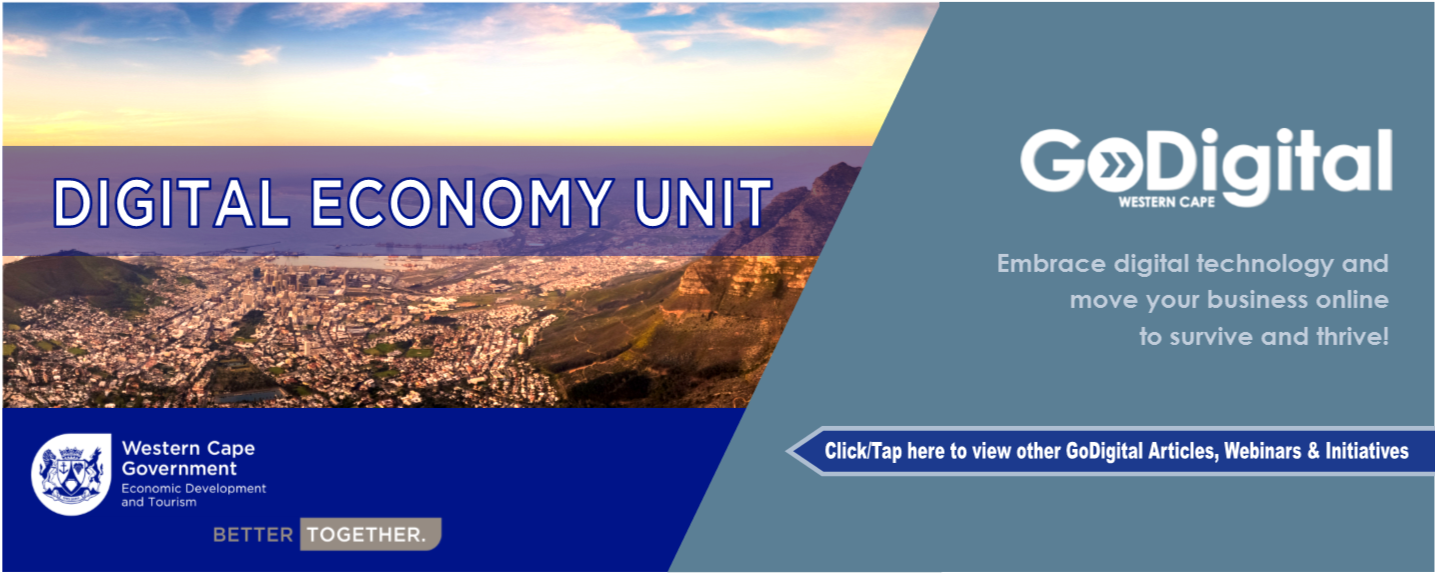How to use social media to sell online
How to use social media to sell online

Introduction
Social media has evolved to become one of the major avenues that is used to sell market or promote goods and services online. According to the latest digital usage statistics, South Africa has approximately 22 million active social media users. The top social media platforms used in South Africa are WhatsApp, YouTube, Facebook (including Facebook messenger), Instagram and Twitter.
In terms of social media advertising, the following numbers indicate the considerable sizes of the audiences currently reached in South Africa (aged 16—64 years) per platform.

In addition to the increasing social media usage, there is compelling evidence that selling and buying through social media is becoming ever more popular, allowing businesses to grow their brands and expand into new customer markets. Since these platforms are online, they are accessible to any business, of any size or location and therefore highly relevant in both the formal and informal sectors.
Provided below are guides on how to use the top platforms to sell your businesses’ products or services online.
1. Snapchat 
This is a video and image messaging app with about 210 million users across the globe comprising mostly the youth market (< 30 years) and incorporating a free marketing tool to promote products as well as to showcase different brands. It operates on limited exposure of its content i.e. any pictures, videos, or messages that are sent or received are available for a short time period and will disappear after being viewed.
To use Snapchat to promote products:
- Download the Snapchat App from the App Store.
- Sign up to create an account – ensure that a username linked to your business identity is used for quick recognition by existing and potential clients.
- Once the account has been created, update the profile, providing as much information as possible including creating SnapCode which is a code like a QR code and can be used to share information about the account. For maximum reach, ensure that the settings for who can view your snaps is set to ‘everyone’.
- Promotion or marketing of products is done by creating snaps which are messages, images or videos that are shared with the audience about the products.
- One can also use snapchat stories which are a series of images or videos customised for the followers and are available for 24hrs to be viewed.
Making use of digital marketing will increase your visibility online and entice customers to engage with your business. Create an experience to boost your brand with quality messaging and content that appeals to your target audience.
2. Instagram 
This is the video and photo sharing application with over 1 billion users across the globe of which 71% of them are below the age of 35 years, hence a massive appeal to the youth. With the increase in users on the platform, Instagram stories have been found to be the preferred method employed by businesses to build their audiences and increase exposure of their products.
There are two methods used by users to sell products on Instagram, namely direct and indirect. For direct Instagram selling, users need to be approved for Instagram shopping which requires the following:
- Must be selling goods.
- Must have an Instagram business account.
- Must have a Facebook page linked to the Instagram account.
- Must have a Facebook catalogue linked to the business account.
Once approved for Instagram shopping, users can then engage with their audience/followers using the various Instagram tools which include product tags on their posts and product stickers on Instagram stories. Instagram explores where user preferences and interests are used to create customized content.
For indirect Instagram selling, users create a general Instagram account and include a business link (website) on their profile where followers can access and purchase products. The account is mostly used for product promotion and to gain additional followers.
3. Facebook 
This is one of the most popular social media platforms across the globe with over 2 billion active users of which about 80 million are businesses and over 60% of active users are under the age of 35 years. Selling products using Facebook can be implemented via two options, namely a Facebook Business page or an e-commerce website builder linked to the Facebook account. The first step is to create a Facebook Business Page. A tab must be created for the online store so that the process of promoting and selling products can commence.
Alternatively, to use an e-commerce website builder linked to the relevant Facebook account, the user needs to:
- Select a preferred e-commerce website builder.
- Build an online store.
- Add the Facebook shop App to the online store and start selling.
4. LinkedIn 
LinkedIn is the most popular social media platform amongst business professionals with around 660 million active users across the globe of which 30 million are businesses and interestingly 62% between the ages of 18 – 34 years . The platform is used by most businesses to build brand awareness, market products and grow businesses with 52% of buyers listing it as an influential channel when doing online research for products.
To use LinkedIn to promote products:
- Create a LinkedIn company/ business page.
- Select the page type, fill in the profile details and confirm the necessary rights to act on behalf of the company/ business.
- Customise the business page.
- Start promoting products using the various activities, channels offered by LinkedIn.
5. Twitter 
This is a microblogging and social networking platform with over 330 million users across the globe with 63% of the active users over 35 years old. As much as 40% of users have indicated that they purchase items after having seen them on Twitter. Most businesses use the Twitter platform to build brand awareness, market products and grow businesses. This is then coupled with an online store to enable followers to purchase products online.
To get started on Twitter:
- Create an appealing profile, include your business logo and product photos.
- Post and promote products through tweets (short messages). A schedule can be created on ‘Tweetdeck’ for future messaging. It is important to make sure the dates and times are suitable to your consumers. Use hashtags (#) and retweets (re-posting a message you receive) related to your product or service to help people find you.
- Tweet your contacts to help you market your product/service.
- Search for and follow people that may be interested in your product.
Where to find help?
There are many guides and online tutorials to help set up business social media accounts and start selling today, so it is recommended to do some additional research before getting started. These platforms have ‘Help’ functions and ‘Contact Centres’, so reach out to them directly if additional assistance is required.
Read more insightful articles in this series to help take your business digital.
References
https://www.helloyes.co.za/digital-statistics-and-usage-in-south-africa-in-2020/
https://www.oberlo.co.za/blog/snapchat-statistics
https://www.groovecommerce.com/ecommerce-blog/snapchat-ecommerce/
https://www.oberlo.co.za/ebooks/get-sales-dropshipping/snapchat
https://www.oberlo.com/blog/instagram-stats-every-marketer-should-know
https://www.comalytics.com/sell-more-online-with-these-two-instagram-methods/
https://blog.hubspot.com/marketing/selling-on-instagram
https://www.oberlo.com/blog/facebook-statistics
https://web.facebook.com/business/pages/set-up
https://www.websitebuilderexpert.com/ecommerce-website-builders/best/
https://www.websitebuilderexpert.com/building-online-stores/
https://www.oberlo.com/blog/linkedin-statistics
https://www.linkedin.com/help/linkedin/suggested/710
https://www.oberlo.com/blog/twitter-statistics
https://www.oberlo.com/blog/twitter-for-business-ultimate-guide
Disclaimer: There are many e-Commerce resources available and this article is by no means exhaustive. The information, company and brand names of many products and services are mentioned, without their express permission, and other companies and brands are available. The intent of providing this information is to inform the public and business communities, thereby driving digital adoption. Their understanding is greatly appreciated. Any mention of a specific company/ business is not an explicit endorsement by the WCG.



